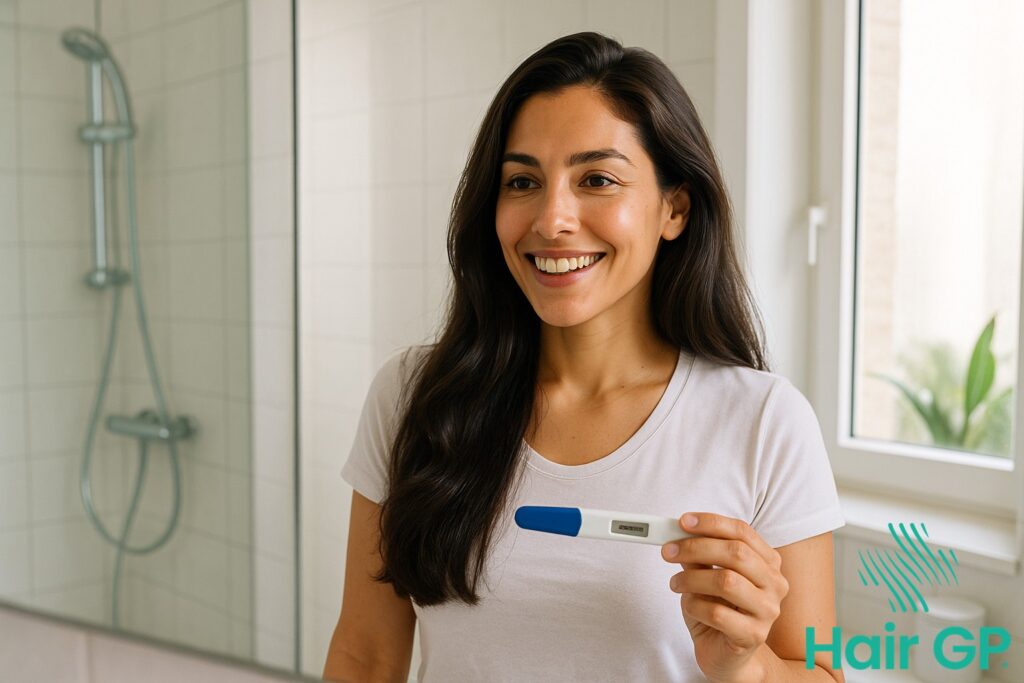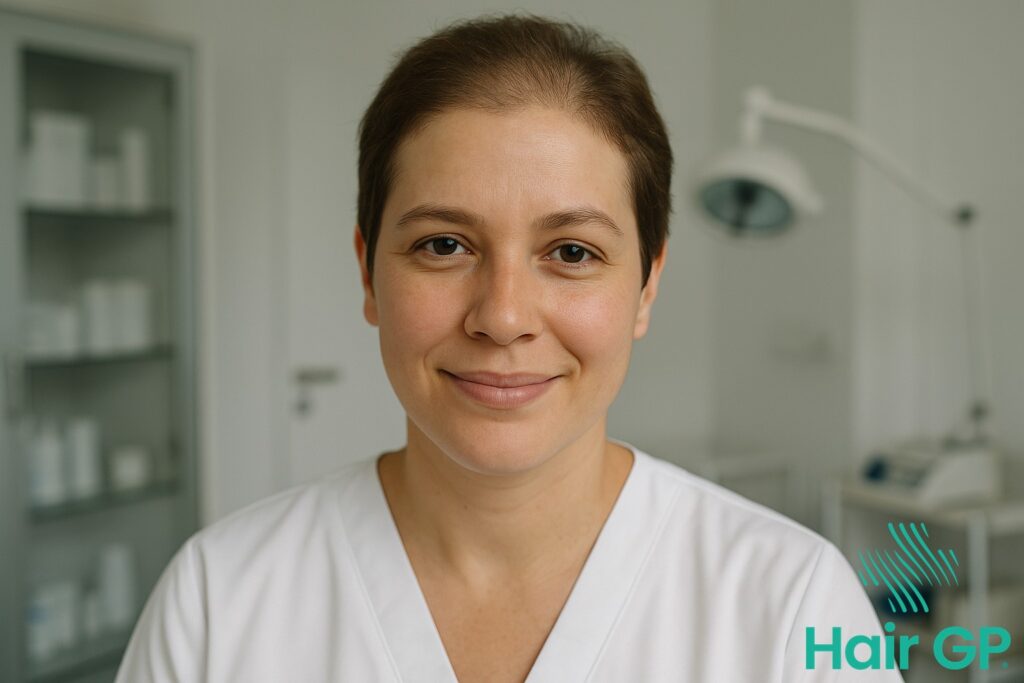Introduction
If you’ve noticed your hair feeling thinner, looking less voluminous, or showing more scalp than before, you’re not alone. Perimenopause brings many changes to a woman’s body, and hair density is often one of the most noticeable and emotionally challenging transformations during this pivotal life stage.
The connection between perimenopause and hair changes runs deeper than simple aging. As hormone levels fluctuate and gradually decline, your hair follicles respond in ways that can dramatically affect growth patterns, thickness, and overall hair health. Understanding why menopause hair loss occurs empowers you to take proactive steps to maintain and even improve your hair’s appearance during this natural transition.
This comprehensive guide explores the science behind perimenopausal hair changes, from hormonal fluctuations that directly impact your follicles to the role of declining estrogen and shifting androgen levels. You’ll discover how targeted nutrition can support healthy growth, learn gentle care routines specifically designed for thinning hair, and explore both professional treatment options and lifestyle modifications that deliver real results.
Whether you’re just beginning to notice subtle changes or dealing with more significant hair density concerns, you’ll find practical strategies for styling and protecting fragile strands, along with clear guidance on when professional intervention might be beneficial. Most importantly, you’ll gain the knowledge and confidence to navigate this natural transition while maintaining beautiful, healthy hair that reflects your inner strength, vitality, and personal power during perimenopause and beyond.
Key Takeaways – TL/DR
- Perimenopause can cause significant hair thinning due to declining oestrogen and progesterone levels
- Early intervention with proper nutrition, targeted hair care, and lifestyle changes can help maintain hair density
- Professional treatments like minoxidil and hormone therapy can be effective when combined with comprehensive hair care strategies
- Understanding your hair growth cycle helps set realistic expectations for improvement timelines
Understanding Perimenopause Hair Changes
During perimenopause, complex biological mechanisms trigger noticeable changes in hair density and quality. Understanding how hormonal fluctuations directly impact hair follicles and disrupt normal growth cycles helps explain why many women experience hair thinning during this transitional period.
The Hair Growth Cycle Explained
Your hair follows a predictable three-phase cycle that determines growth, rest, and renewal. The anagen phase represents active growth, lasting 2-6 years for scalp hair, during which follicles produce strong, thick strands [1]. Following this, the brief catagen phase signals transition as follicles shrink and detach from their blood supply over 2-3 weeks. Finally, the telogen phase allows hair to rest for approximately 3 months before naturally shedding to make room for new growth [1]. During perimenopause, this carefully orchestrated hair growth cycle becomes disrupted, leading to shortened anagen phases and extended telogen periods.
How Hormones Affect Hair Follicles
Oestrogen and progesterone play protective roles in maintaining healthy hair follicles by extending the anagen phase and promoting robust growth. As these hormones decline during perimenopause, hair follicles lose this protective influence [2]. Simultaneously, sensitivity to androgens like testosterone increases, causing follicle miniaturization – a process where hair follicles gradually shrink and produce progressively thinner, weaker strands. This hormonal shift explains why previously thick hair becomes fine and sparse over time.
Common Hair Changes During Perimenopause
Most women notice diffuse thinning rather than distinct bald patches, with hair becoming less dense across the entire scalp. Texture changes often accompany volume loss, as strands become finer, more fragile, and less manageable. These changes typically begin subtly in the early forties and progress gradually throughout perimenopause, with the crown and part line showing the most noticeable thinning. The timeline varies significantly among individuals, but most women experience noticeable changes within 2-5 years of entering perimenopause.
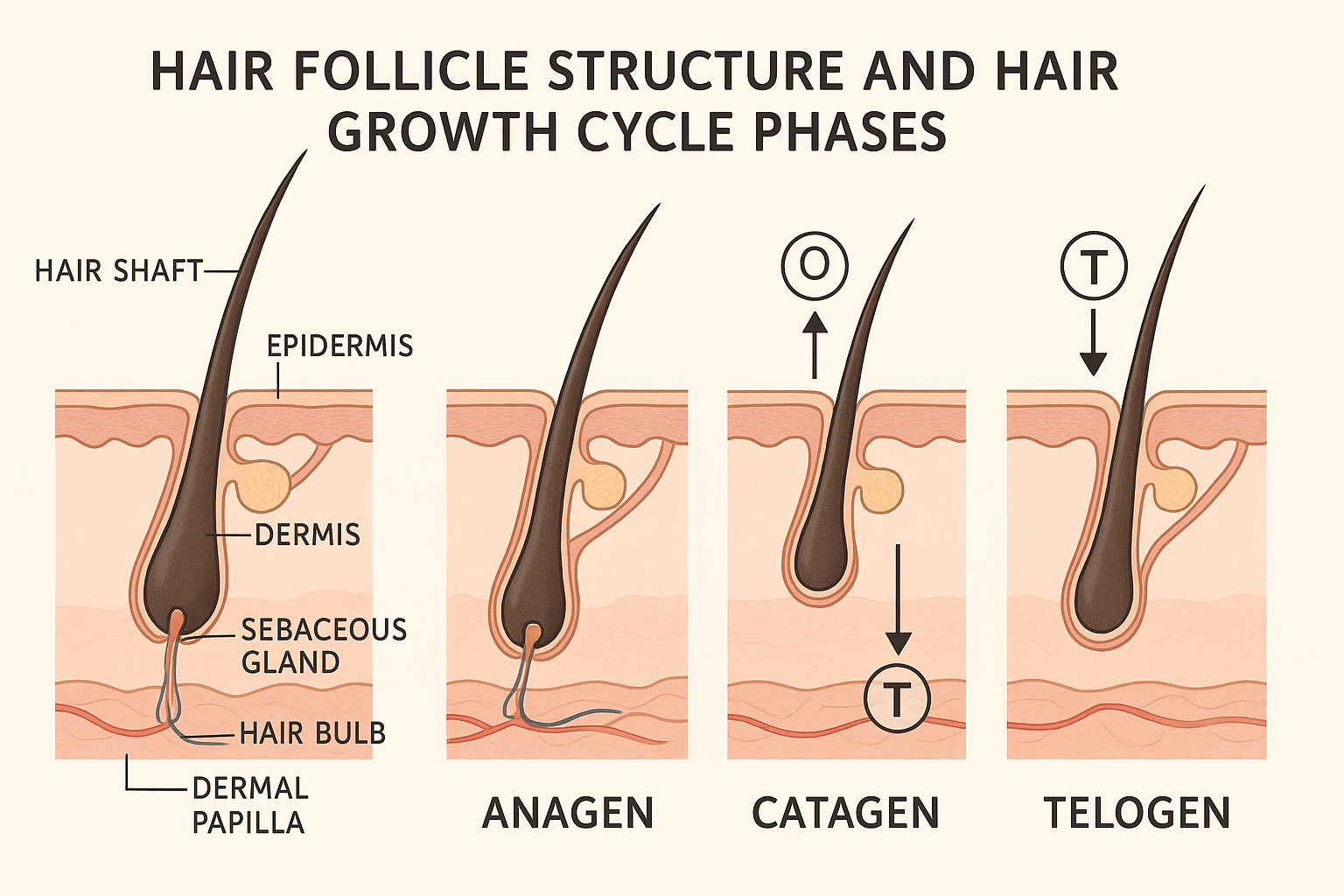
Hormonal Impact on Hair Density
The hormonal fluctuations during perimenopause create a complex cascade of changes that directly impact hair follicle function and density. Understanding these specific mechanisms—particularly oestrogen decline, androgen dominance, and their interactions—provides crucial insight into why menopausal hair loss occurs and how it can be effectively addressed.
Oestrogen Decline and Hair Loss
Oestrogen plays a protective role in maintaining hair growth by extending the anagen (growth) phase of the hair cycle and promoting follicular health [3]. As oestrogen levels decline during perimenopause, typically beginning in a woman’s 40s, hair follicles lose this protective influence. The reduction in oestrogen shortens the growth phase while simultaneously lengthening the telogen (resting) phase, resulting in progressively thinner hair strands and decreased overall density.
Hair follicles contain oestrogen receptors that directly respond to hormonal changes, making them particularly sensitive to declining oestrogen levels [3]. This sensitivity varies among individuals due to genetic factors, explaining why some women experience more dramatic hair thinning than others during this transition period.
Androgen Dominance Effects
While oestrogen levels decline, androgen sensitivity increases, creating a state of relative androgen dominance that triggers female pattern hair loss. Dihydrotestosterone (DHT), converted from testosterone by the enzyme 5-alpha reductase, binds to hair follicle receptors and progressively miniaturizes them [4]. This process, known as androgenetic alopecia, follows a predictable pattern of thinning at the crown and widening part line.
The conversion of testosterone to DHT occurs directly within hair follicles, making genetically predisposed women particularly vulnerable to hair thinning even with normal testosterone levels [4]. This explains why menopausal hair loss often mirrors male pattern baldness patterns, though typically presenting as diffuse thinning rather than complete baldness in affected areas.
Nutritional Support for Healthy Hair Growth
Proper nutrition forms the foundation for healthy hair growth during perimenopause, when hormonal changes can compromise hair density. Strategic dietary choices and targeted supplementation can help support hair growth by providing essential nutrients that strengthen hair follicles and promote optimal growth cycles.
Essential Vitamins for Hair Growth
Biotin, a B-complex vitamin, plays a crucial role in keratin production and can help stimulate hair growth when deficiencies exist [5]. Vitamin D deficiency has been strongly linked to various forms of hair loss, including female pattern hair loss, making adequate levels essential for hair health [5]. The B-vitamin complex, particularly B12, folate, and niacin, supports cellular metabolism in hair follicles and helps maintain the hair growth cycle. Women experiencing perimenopause should ensure adequate intake through both dietary sources and supplementation when necessary.
Critical Minerals and Proteins
Iron deficiency represents one of the most common nutritional causes of hair loss in women, particularly during perimenopause when iron stores may be depleted [6]. Optimal iron absorption requires pairing iron-rich foods with vitamin C sources while avoiding calcium and caffeine during iron consumption. Zinc supplementation can support hair growth by regulating hormone levels and supporting protein synthesis in hair follicles. Protein requirements increase during perimenopause, with hair follicles needing adequate amino acids, particularly cysteine and methionine, to produce strong keratin structures. Daily protein intake should include complete proteins from lean meats, fish, eggs, and plant-based combinations.
Anti-Inflammatory Foods and Omega-3s
Chronic inflammation can disrupt the hair growth cycle and contribute to hair thinning during perimenopause. Omega-3 fatty acids from fatty fish, flaxseeds, and walnuts help reduce systemic inflammation and support hair health by improving blood flow to hair follicles. Antioxidant-rich foods including berries, leafy greens, and colorful vegetables protect hair follicles from oxidative stress that can accelerate hair loss. Anti-inflammatory spices like turmeric and ginger, combined with green tea’s polyphenols, create a protective dietary environment that can help maintain hair density. A Mediterranean-style eating pattern incorporating these elements provides comprehensive nutritional support for optimal hair growth during hormonal transitions.

Essential Hair Care Routines for Thinning Hair
Adapting your hair care routine during perimenopause is essential for maintaining healthy, voluminous hair as hormonal changes affect texture and density. Strategic modifications to cleansing, product selection, and styling techniques can significantly improve the appearance and health of thinning hair while protecting against further damage.
Gentle Cleansing and Scalp Care
Washing frequency becomes crucial for fine hair during perimenopause—typically every other day or three times per week prevents over-stripping natural oils while maintaining cleanliness. Focus on massaging the scalp gently with fingertips for 30-60 seconds during washing to stimulate blood circulation and remove buildup. Choose sulfate-free shampoos with a pH between 4.5-6.5 to maintain the hair cuticle’s integrity and prevent excessive dryness. Always concentrate shampoo on the scalp rather than the hair lengths, allowing the suds to gently cleanse the strands as you rinse.
Volumizing and Strengthening Products
Select hair care products containing volumizing ingredients like rice protein, biotin, and keratin to add body without weighing down fine hair. Lightweight protein treatments applied weekly can strengthen the hair shaft and reduce breakage, particularly beneficial for dry hair that’s become more fragile. Use leave-in conditioners sparingly, focusing on mid-lengths and ends while avoiding the roots to prevent flattening. Look for products labeled as weightless or designed specifically for fine hair, as these formulations provide moisture and protection without compromising volume.
Heat Protection and Styling Tips
Always apply heat protectant before using any thermal styling tools, distributing the product evenly from roots to ends on damp hair. When possible, embrace air-drying techniques by gently blotting hair with a microfiber towel and allowing natural texture to develop. For volumizing styling, flip your head upside down while blow-drying on low heat, using a round brush to lift hair at the roots. Limit heat styling to 2-3 times per week and keep temperatures below 300°F to minimize damage to already vulnerable perimenopausal hair.
Scalp Health and Circulation
Incorporate daily scalp massage using circular motions with your fingertips for 3-5 minutes to improve blood circulation and potentially stimulate hair growth. Consider gentle scalp exfoliation once weekly using a specialized scrub or soft-bristled brush to remove dead skin cells and product buildup. Essential oil blends like rosemary or peppermint, when diluted properly, can enhance circulation during massage sessions while providing aromatherapy benefits for stress reduction—an important factor in maintaining healthy hair growth cycles.
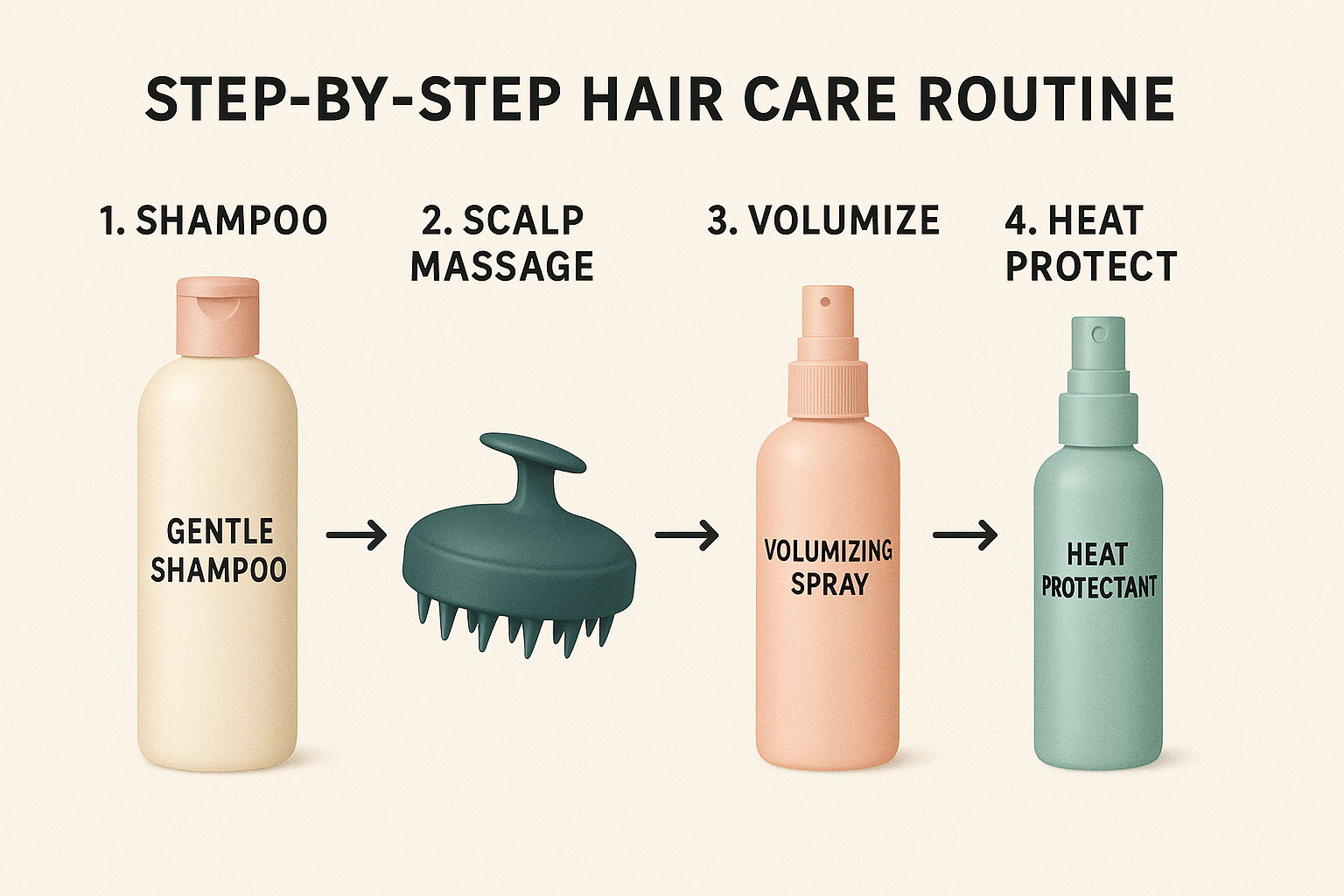
Professional Treatment Options
Evidence-based professional treatments for perimenopausal hair loss encompass both medical and cosmetic interventions, ranging from FDA-approved topical solutions to advanced surgical procedures. Treatment selection depends on the underlying cause, severity of hair loss, and individual patient factors including hormonal status and overall health profile.
Topical Treatments and Minoxidil
Minoxidil remains the gold standard topical treatment for androgenetic alopecia and diffuse hair thinning in perimenopausal women. The 5% concentration demonstrates superior efficacy compared to lower strengths, with clinical studies showing significant hair count improvements in 60-70% of patients after 6 months of consistent use [5]. Application technique involves twice-daily administration to the scalp using the provided dropper or foam formulation, targeting areas of visible thinning. Results typically become apparent after 3-4 months, with peak benefits observed at 12-24 months of continuous treatment. Women experiencing telogen effluvium may see faster initial improvements compared to those with androgenetic patterns. Finasteride, while effective in men, shows limited efficacy in postmenopausal women and requires careful consideration due to potential teratogenic effects in women of childbearing age.
Hormone Therapy Considerations
Hormone replacement therapy can significantly impact hair health during perimenopause, though effects vary based on formulation and individual response. Oestrogen-dominant HRT formulations often improve hair density and reduce shedding by countering androgenic effects on hair follicles. Bioidentical hormone therapy using estradiol and progesterone may offer advantages over synthetic alternatives, potentially reducing hair loss while supporting overall follicle health. However, comprehensive risk assessment remains essential, as HRT carries cardiovascular and cancer risks that must be weighed against potential hair benefits. Some women experience initial increased shedding when starting HRT before seeing improvements.
Advanced Procedures and Transplants
Platelet-rich plasma therapy shows promising results for perimenopausal hair loss, with studies demonstrating 30-40% improvement in hair density after 3-6 treatment sessions [7]. Low-level laser therapy provides another non-invasive option, stimulating cellular activity in hair follicles through photobiomodulation. Hair transplants represent the most definitive solution for severe cases, though candidacy requires adequate donor hair and realistic expectations about coverage limitations. Modern techniques like follicular unit extraction minimize scarring and recovery time, making transplants increasingly viable for women experiencing significant pattern hair loss.
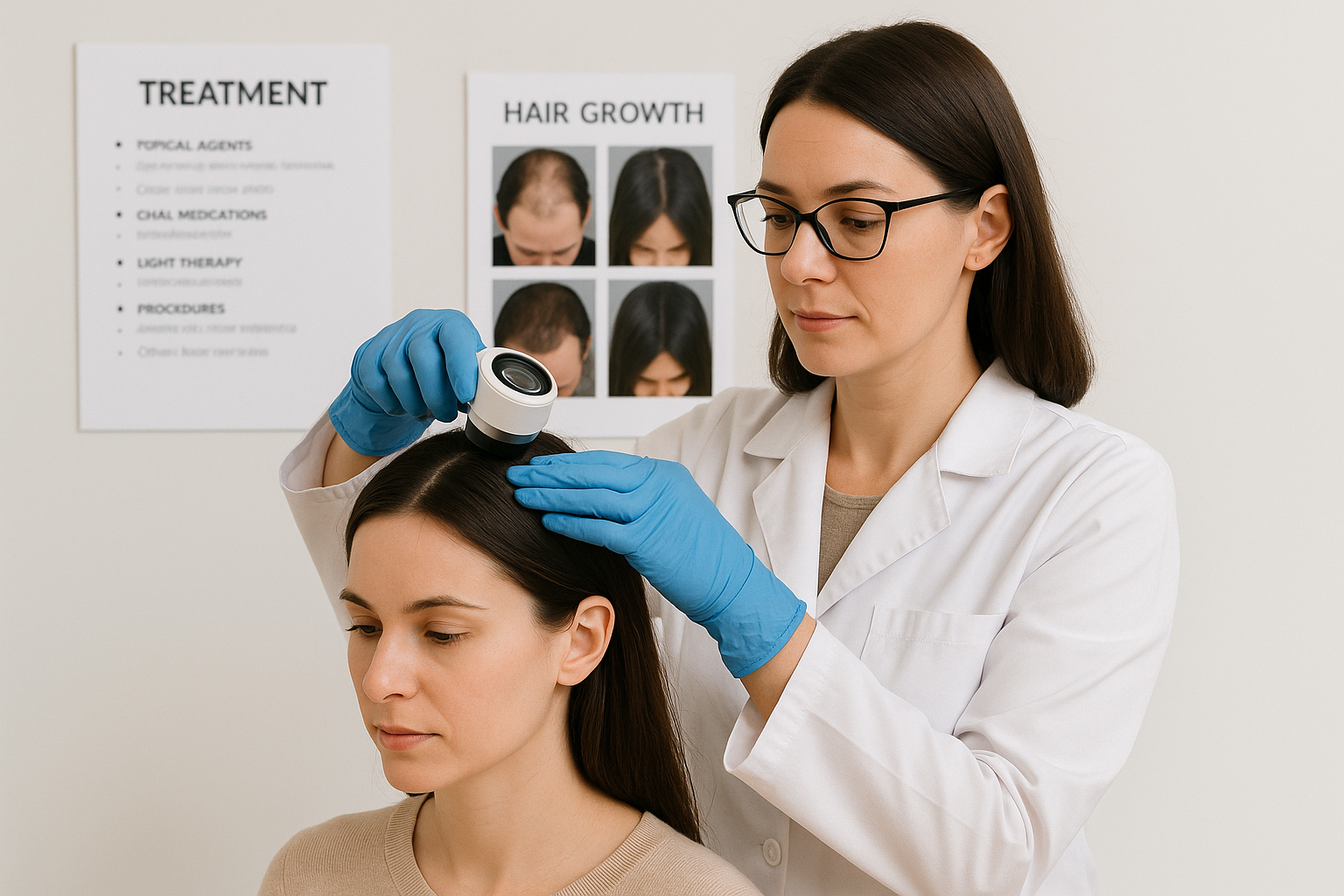
Lifestyle Factors for Hair Health
Perimenopause brings unique challenges to hair health that extend beyond hormonal changes alone. Strategic lifestyle modifications can significantly support hair density and growth by addressing underlying factors that contribute to hair shedding and compromised follicle function during this transitional period.
Stress Management and Hair Loss
Chronic stress elevates cortisol levels, directly triggering chronic telogen effluvium and accelerating hair shedding patterns [8]. Managing stress through regular meditation, deep breathing exercises, and mindfulness practices helps regulate cortisol production and protects healthy hair follicles from premature entry into the resting phase. Simple stress reduction techniques like progressive muscle relaxation, journaling, or engaging in creative hobbies can interrupt the stress-hair loss cycle. Consistency in stress management approaches proves more beneficial than intensive but sporadic efforts, allowing the hair growth cycle to stabilize over time.
Sleep and Hair Growth Connection
Quality sleep directly impacts hair regeneration through growth hormone release, which peaks during deep sleep phases and supports cellular repair in hair follicles. Poor sleep quality disrupts this natural recovery process, potentially worsening hair shedding during perimenopause. Establishing consistent sleep hygiene practices, including maintaining regular bedtime routines and creating optimal sleep environments, supports healthy hair follicles. Natural melatonin production, enhanced by limiting evening screen exposure and maintaining darkness during sleep, further promotes the restorative processes essential for hair growth.
Exercise and Circulation Benefits
Regular physical activity enhances scalp circulation, delivering vital nutrients and oxygen to hair follicles while reducing systemic inflammation that can contribute to hair loss. Moderate cardiovascular exercise, such as brisk walking, swimming, or cycling for 30 minutes most days, optimizes blood flow without creating additional physical stress. Gentle scalp massage during exercise cool-down periods can further stimulate circulation, supporting the foundation for stronger, healthier hair growth throughout the perimenopausal transition.
Styling and Protection Strategies
Implementing protective styling techniques and establishing gentle daily routines can significantly reduce hair breakage while preserving thinning strands. These strategic approaches minimize manipulation and stress on the hair shaft, allowing fragile follicles to recover. The right combination of protective methods and volume-enhancing techniques maintains healthy, fuller-looking hair regardless of your hair type.
Protective Styling Techniques
Gentle braiding techniques, such as loose three-strand braids, distribute tension evenly along the hair shaft without excessive stress. Secure styles with soft hair ties rather than tight elastics that cause breakage. Protective updos like low buns and loose chignons keep hair ends tucked away from environmental damage while reducing daily manipulation. For overnight protection, silk pillowcases minimize friction that damages delicate strands. Loose protective styles before sleep, such as silk scarf wraps or gentle braids, prevent tangles and reduce morning styling stress.
Volume-Boosting Methods
Root lifting techniques using volumizing mousses can boost shine while creating fuller-looking hair without damaging the hair shaft. Apply products to damp roots and use round brushes while blow-drying, lifting sections upward for natural volume. Texturizing techniques, including gentle backcombing at the crown, add body to fine strands. Strategic layering during professional cuts creates natural lift, making hair appear thicker while removing weight. Work with your natural hair type rather than against it – embrace gentle waves instead of forcing unnatural styles. Cool air finishing helps set volume while sealing cuticles for enhanced shine and reduced breakage.
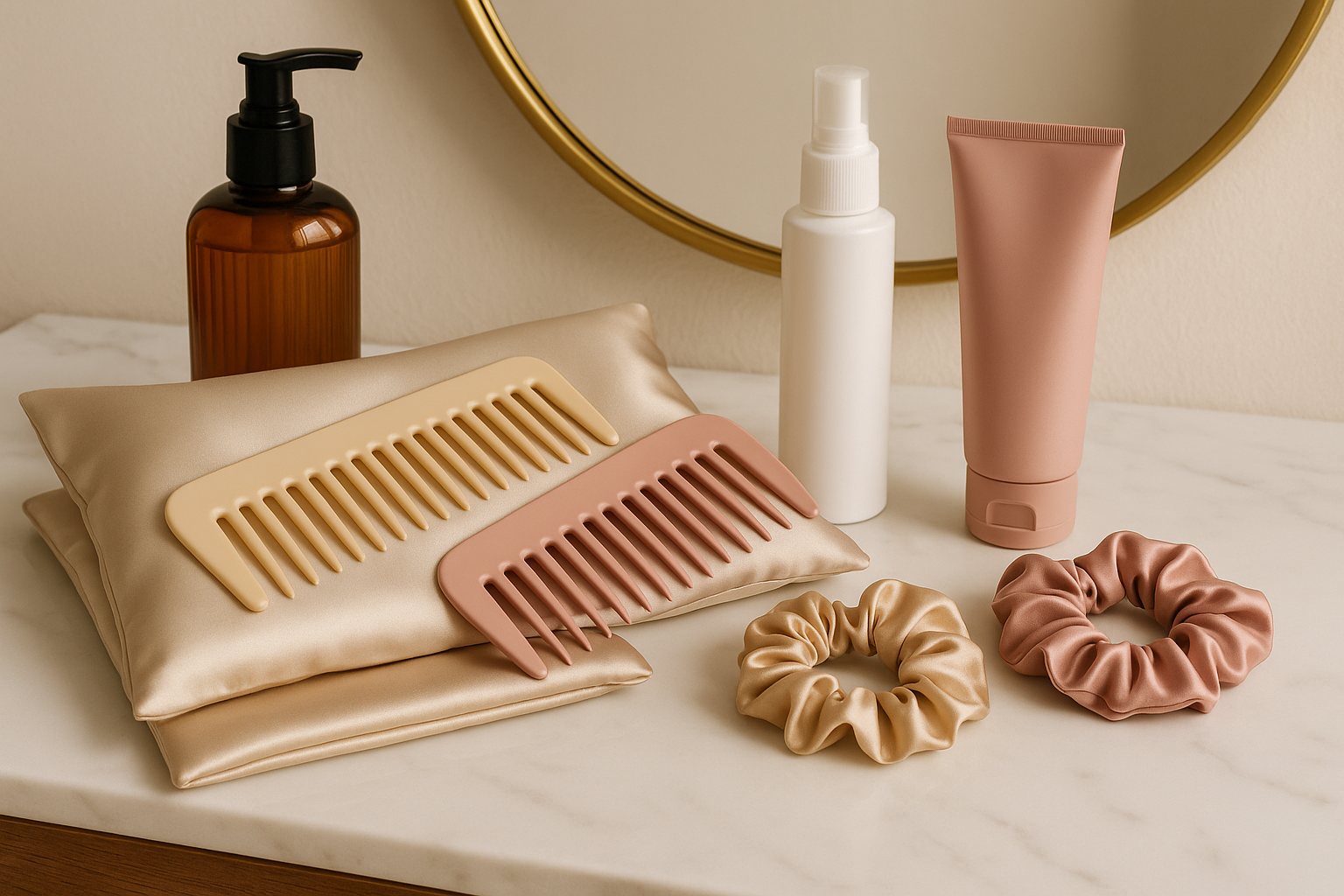
When to Seek Professional Help
While many people who experience hair loss can manage mild thinning with over-the-counter treatments and lifestyle modifications, certain situations require professional medical evaluation. Recognizing when your hair loss problem has progressed beyond self-treatment capabilities ensures timely intervention and prevents further deterioration.
Warning Signs and Red Flags
Sudden hair loss occurring over days or weeks rather than gradual thinning demands immediate professional attention, as this pattern often indicates underlying medical conditions requiring specific treatment. Patchy baldness, particularly the circular bald spots characteristic of alopecia areata, represents an autoimmune condition that responds best to early medical intervention. Scalp inflammation, including redness, scaling, burning sensations, or visible irritation, suggests possible infections or inflammatory conditions that won’t resolve without proper medical treatment.
Excessive shedding that continues beyond three months, hair loss accompanied by fatigue or other systemic symptoms, and any hair loss in children or adolescents also warrant professional evaluation. Additionally, if over-the-counter treatments haven’t shown improvement after six months of consistent use, consulting a dermatologist or trichologist becomes essential.
Preparing for Your Appointment
Effective preparation maximizes your consultation’s value and helps professionals diagnose your condition accurately. Create photo documentation showing your hair loss progression over time, including close-up images of affected areas and overall scalp views. Compile your complete medical history, including current medications, recent illnesses, stress events, and family history of hair loss. Track your treatment history, documenting what products you’ve tried, duration of use, and any observed results or side effects.
Conclusion
Maintaining hair density during perimenopause requires a comprehensive approach that combines multiple evidence-based strategies. Through targeted nutritional support, appropriate hormone therapy when indicated, and consistent topical treatments, women can effectively address the hormonal changes that impact hair health during this transitional period.
The key to achieving more hair lies in understanding that results require patience and consistency. Nutritional interventions, including iron optimization and protein supplementation, typically show improvements within 3-6 months. Topical treatments like minoxidil can take 6-12 months to demonstrate significant hair density improvements, while hormone therapy effects may be noticeable within the first few months of treatment.
A proactive approach to healthy hair during perimenopause involves early intervention rather than waiting for significant hair loss to occur. Regular monitoring of nutritional status, maintaining scalp health through gentle care practices, and addressing hormonal imbalances promptly can prevent more severe hair thinning.
Success in maintaining hair density during perimenopause depends on realistic expectations and long-term commitment to hair health strategies. While complete restoration to pre-menopausal levels may not always be achievable, significant improvements in hair thickness, reduced shedding, and overall hair quality are attainable goals for most women who implement these comprehensive approaches consistently.
Frequently Asked Questions
Most treatments require 3-6 months of consistent use before visible improvements appear, as hair grows slowly at about half an inch per month. Topical minoxidil may show initial results in 4-6 months, while nutritional interventions can take 6-12 months for full benefits.
While some hair density loss is permanent due to hormonal changes, many women can significantly improve their hair health and slow further loss with proper treatment. Early intervention typically yields better results than waiting until hair loss is severe.
Natural options include scalp massage, essential oils like rosemary, saw palmetto supplements, and red light therapy. However, these typically show more modest results compared to FDA-approved treatments like minoxidil.
Hair typically doesn’t return to pre-perimenopause density after menopause, as hormonal changes are permanent. However, with proper care and treatment, many women can maintain their current hair density and prevent further loss.
References
- Messenger AG, Rundegren J. Minoxidil: mechanisms of action on hair growth. Br J Dermatol. 2004;150(2):186-194.
- Grymowicz M, Rudnicka E, Podfigurna A, et al. Hormonal effects on hair follicles. Int J Mol Sci. 2020;21(15):5342.
- Hosking AM, Juhasz M, Atanaskova Mesinkovska N. Complementary and Alternative Treatments for Alopecia: A Comprehensive Review. Skin Pharmacol Physiol. 2019;32(4):205-217.
- Fabbrocini G, Cantelli M, Masarà A, Annunziata MC, Marasca C, Cacciapuoti S. Female pattern hair loss: A clinical, pathophysiological and therapeutic review. Int J Womens Dermatol. 2018;4(4):203-211.
- Almohanna HM, Ahmed AA, Tsatalis JP, Tosti A. The Role of Vitamins and Minerals in Hair Loss: A Review. Dermatol Ther (Heidelb). 2019;9(1):51-70.
- Moeinvaziri M, Mansoori P, Holakooee K, Safaee Naraghi Z, Abbasi A. Iron status in diffuse telogen hair loss among women. Acta Dermatovenerol Croat. 2009;17(4):279-84.
- Gupta AK, Mays RR, Dotzert MS, et al. Efficacy of non-surgical treatments for androgenetic alopecia: a systematic review and network meta-analysis. J Eur Acad Dermatol Venereol. 2018;32(12):2112-2125.
- Kang JI, Kim SC, Kim MK, et al. Effects of a multifunctional food supplement on hair loss and growth in women with self-perceived thinning hair. J Med Food. 2018;21(1):81-91.




